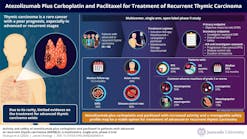A new study at Children’s Hospital Los Angeles independently verified the value of a system that assesses hepatoblastoma risk in children. The researchers also discovered the potential for tumor histology — the examination of a tumor’s tissue and its structure — to predict a patient’s hepatoblastoma prognosis.
Hepatoblastoma is a rare childhood liver cancer, usually seen within the first three years of a child’s life with 50 to 70 cases occurring in the U.S. each year.
The risk assessment process, called risk stratification, has the potential to improve success rates for children undergoing hepatoblastoma treatment. Risk stratification can also reduce unnecessary exposure to chemotherapy. Often, treatment for low-risk cases is too aggressive, or liver transplants are not prioritized for high-risk cases.
In 2016, leading hepatoblastoma researchers from around the world created the Children’s Hepatic tumors International Collaboration Hepatoblastoma Stratification (CHIC-HS). Information such as age at diagnosis, whether the tumor has spread within the body and alpha fetoprotein level (which is usually increased in liver cancer) contributes to the CHIC-HS risk categorization. This database of clinical trial data aims to establish a common approach to staging and risk stratification. The CHIC-HS system is not yet to be globally adopted, however, due to a lack of validation.
Validating the CHIC-HS system
The study retrospectively tested the CHIC-HS system on an independent cohort of patients diagnosed and treated at Children’s Hospital Los Angeles from 2000 to 2016. The team examined the electronic medical records, imaging, and pathology of 96 patients.
The investigators confirmed that the CHIC-HS system successfully predicts how much risk a tumor poses. Children in the lower-risk categories improved with minimal treatment. Those in higher-risk groups required a more intense treatment approach.
The CHIC-HS system also corresponded with long-term patient outcomes after treatment. These outcomes include overall survival, and how long a patient lives without relapse or cancer progression.
For 84 of the patients included in the study, tumor histology collected before treatment was available for analysis. Pretreatment biopsies, which provide tissue samples of the tumor, are not always possible or commonly collected. Having a cohort of this size offered a unique opportunity to assess the relationship between histological characteristics in the tumor, risk category and patient survival.
The investigators discovered that certain histological features predicted patient risk and long-term outcomes, including relapse and survival rates. “Histology may help further enhance the risk stratification scale,” concludes Leo Mascarenhas, MD, MS, Deputy Director of the Cancer and Blood Disease Institute at CHLA. “Our hope is that our work will be proven in the ongoing Pediatric Hepatic International Tumor Trial.”
Ongoing research at CHLA focuses on the identification of genetic markers that may further contribute to risk stratification and inform hepatoblastoma treatment.
“This cancer, from being a pretty deadly cancer, is now highly curable in a lot of patients,” says Mascarenhas. “A lot of our goals should really be aimed at limiting the toxicity of treatment in these patients and, for those with high-risk disease, figuring out how to improve their outcomes.”





